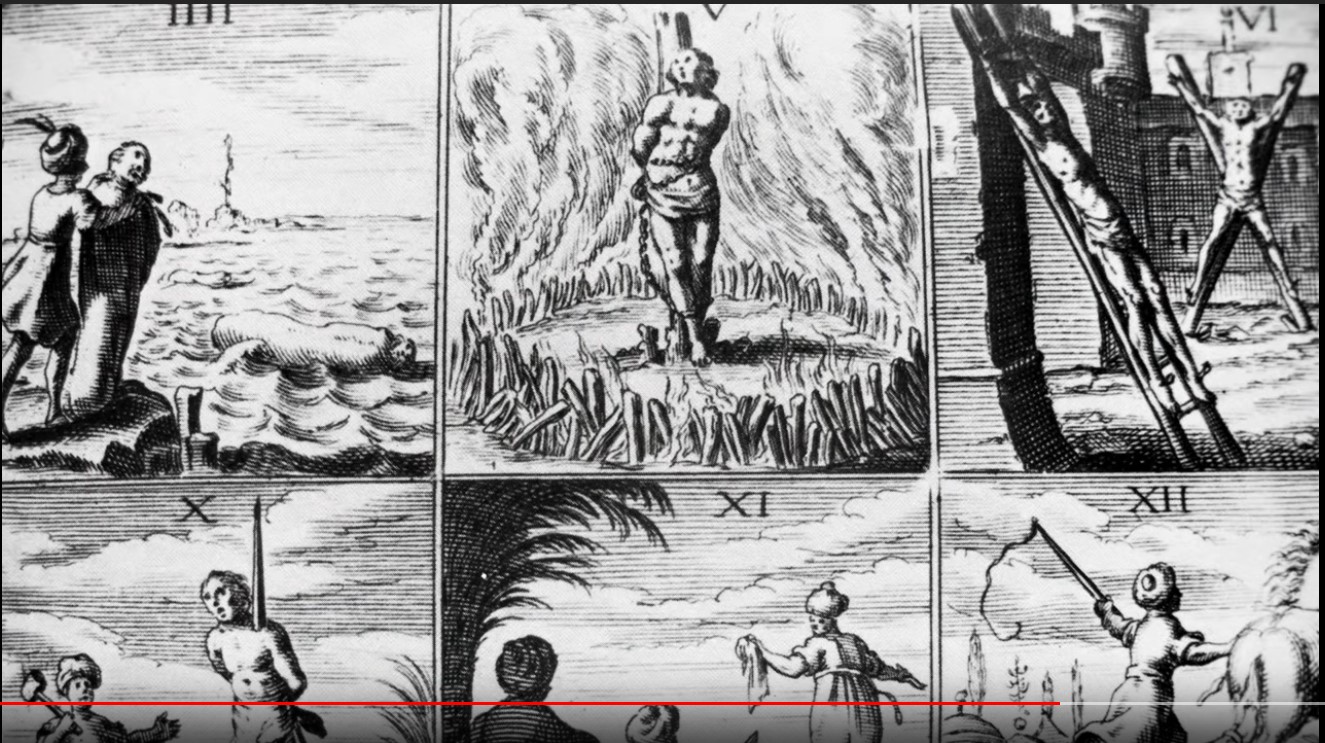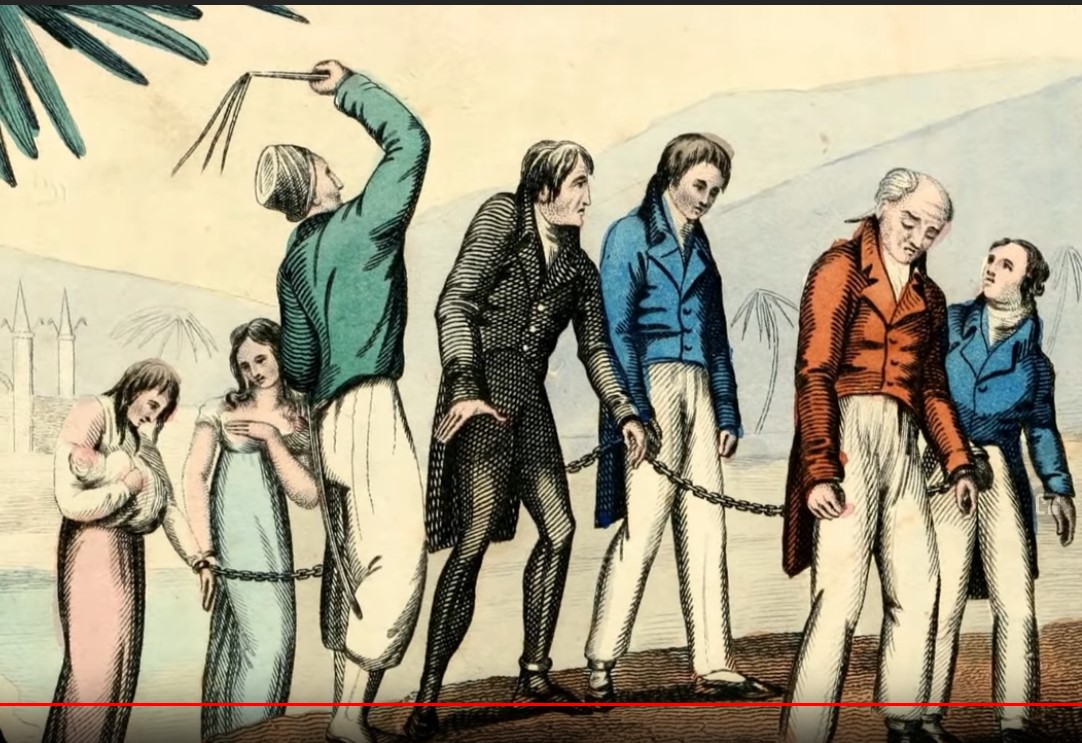
In this episode we look at the white slave trade in Africa, where Barbary Pirates kidnapped Europeans and sold them into slavery, attacking shipping as well as infiltrating coastal villages and islands. The episode looks at the extent this problem had on Europe and America between the 16th-19th Century.




Jews have been in control of the International Slave Trade since at least Roman times, when Hebrew Slavetraders followed the Roman armies into Gaul and northern Europe. They offered the Roman soldiers ready cash for “war captives”, blondes & redheads fetching the highest prices, and dragged them back to Rome, where their long hair was shaved off to make wigs for wealthy dark-haired Romans. Male slaves were raped by women and sodomized by men. The female slaves were forced to go bare-breasted to incite the lust of their “owners”, and serve as “brood mares”, also forced to mate with male slaves to produce more blonde children for sale.
As early as the 6th century AD, Jewish Radhanite Slavetraders were dragging kidnapped Christian Slavic children to sell as sex slaves as far as China and all countries in between. Jews even established Slave Castration Centres at Venice, Verdun and Lucena in Spain, where Christian Slavic boys were castrated for sale to the Muslim world as Eunuch Harem Guards. Muslims are forbidden to castrate human males, so they paid high prices for eunuchs, and still do. The Silk Road was actually The Child Sex Slave Road, and it was not Africans, but blonde Christian children who were the most highly prized. That’s where the word “slave” comes from: “Slav”.
One historical research article even suggested that Vikings attacked Christian monasteries on Britain’s coast to kidnap young monks for castration and sale as eunuch “scribes” to the Islamic world. I don’t have all the references to hand, but google “Jewish Control of the International Slave Trade”, “Modern White Slave Trade”, “Viking slave raids on monasteries”, and “Radhanites”.
http://www.rense.com
Jewish Involvement In
Black Slave Trade
To The Americas
By Rabbi Marc Lee Raphael
2-24-6
Disclaimer
https://rense.com/general69/invo.htm" title="Send this page to a friend">Email This Article
“Jews also took an active part in the Dutch colonial slave trade; indeed, the bylaws of the Recife and Mauricia congregations (1648) included an imposta (Jewish tax) of five soldos for each Negro slave a Brazilian Jew purchased from the West Indies Company. Slave auctions were postponed if they fell on a Jewish holiday. In Curacao in the seventeenth century, as well as in the British colonies of Barbados and Jamaica in the eighteenth century, Jewish merchants played a major role in the slave trade. In fact, in all the American colonies, whether French (Martinique), British, or Dutch, Jewish merchants frequently dominated.
“This was no less true on the North American mainland, where during the eighteenth century Jews participated in the ‘triangular trade’ that brought slaves from Africa to the West Indies and there exchanged them for molasses, which in turn was taken to New England and converted into rum for sale in Africa. Isaac Da Costa of Charleston in the 1750’s, David Franks of Philadelphia in the 1760’s, and Aaron Lopez of Newport in the late 1760’s and early 1770’s dominated Jewish slave trading on the American continent.”
Jews and Judaism in the United States (1983), p. 14.